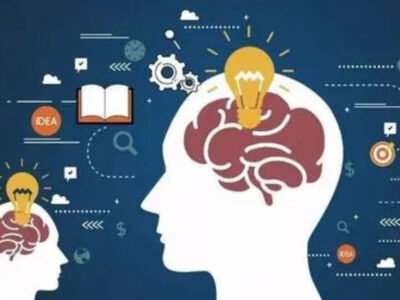Analyzing passages is a crucial component of reading comprehension in English proficiency tests. While it is not possible to provide a comprehensive passage analysis within the given word limit, I can guide you through the key elements and strategies involved in analyzing passages. This will help you develop a systematic approach to understanding and interpreting passages effectively.
1. Structure and Organization:
- To improve English proficiency test results, firstly examine the overall structure of the passage, including paragraphs and headings in reading comprehension.
- Identify any transitional words or phrases that indicate the flow of ideas.
- Look for topic sentences that summarize the main idea of each paragraph.
2. Supporting Details and Evidence:
- Look for specific details, examples, or evidence provided to support the main idea.
- Analyze the credibility and relevance of the supporting information.
- Identify any cause-and-effect relationships or comparisons made in the passage.
3. Inference and Interpretation:
- Make logical inferences based on the information provided in the passage.
- Consider the implications or broader significance of the ideas presented.
- Evaluate the author’s viewpoint and identify any biases or assumptions.
4. Critical Thinking and Evaluation:
- Evaluate the strengths and weaknesses of the argument or information presented.
- Consider alternative viewpoints or counterarguments that may arise from the passage.
5. Context and Background Information:
- Consider the historical, cultural, or social context that may influence the passage.
- Look for any references to specific events, people, or concepts that require additional background knowledge.
- Evaluate how the passage relates to current or broader topics or issues.
6. Tone and Style:
- Analyze the author’s tone and attitude towards the subject matter.
- Consider the intended audience and how the tone and style may cater to their expectations or interests.
- Look for any rhetorical devices or persuasive techniques used to convey the author’s message.
7. Textual Relationships:
- Identify relationships between different parts of the passage, such as cause-and-effect, problem-solution, or comparison-contrast.
- Look for transitions or connective words that indicate these relationships.
- Consider how the author develops and organizes ideas within the passage.
8. Summarizing and Synthesizing:
- Summarize the main points and key details of the passage in your own words.
- Identify the overarching message or take away from the passage.
- Synthesize the information from the passage with your prior knowledge or other related sources.
9. Critical Reading and Evaluation:
- Evaluate the validity and reliability of the information presented in the passage.
- Assess the author’s credibility and expertise on the subject matter.
- Consider any biases or limitations that may affect the author’s perspective.
10. Time Management:
- Develop effective time management strategies to allocate appropriate time for reading and analyzing the passage.
- Skim through the passage initially to get an overview before delving into a more detailed analysis.
- Use strategies like underlining key information or taking brief notes to aid comprehension and recall.
11. Practice and Familiarization:
- Practice analyzing various types of passages from different genres and subject areas.
- Engage in active reading by actively questioning and engaging with the text.
- Review sample questions and practice answering them to strengthen your analytical skills.
12. Pay Attention to Textual Clues:
- Look for keywords or phrases that signal important information or shifts in the passage.
- Identify signal words that indicate cause and effect, comparison, contrast, or sequence.
- Pay attention to qualifiers, such as “some,” “most,” or “often,” that can indicate the level of generalization or certainty.
13. Identify Text Structure:
- Determine the organizational structure of the passage, such as chronological, problem-solution, or descriptive.
- Recognize patterns like lists, definitions, or examples that contribute to the overall structure.
- Understand how the text structure supports the author’s main argument or purpose.
14. Analyze Relationships Between Ideas:
- Identify how ideas are connected within the passage, such as through logical progression or supporting evidence.
- Recognize when the author presents counterarguments or alternative viewpoints.
- Consider how the author uses transitions or linking words to establish connections between ideas.
15. Make Inferences:
- Draw logical conclusions based on the information presented in the passage.
- Use clues from the text, prior knowledge, and common sense to make educated guesses.
- Be cautious not to make unsupported assumptions or extrapolate beyond what the passage provides.
16. Evaluate Tone and Point of View:
- Analyze the author’s tone and attitude towards the subject matter.
- Consider the author’s perspective and biases that may influence the presentation of information.
- Assess how the author’s tone and point of view contribute to the overall purpose and impact of the passage.
17. Consider the Target Audience:
- Reflect on who the intended readership or audience might be.
- Evaluate how the passage caters to the knowledge, interests, or expectations of the target audience.
- Consider whether the author employs any rhetorical strategies or appeals to engage the intended readers.
18. Practice Active Reading Strategies:
- Engage in active reading by highlighting or underlining key points, questions, or observations.
- Take concise notes to summarize main ideas or jot down important details.
- Monitor your comprehension as you read, identifying areas where you may need to read more closely or revisit certain sections.
19. Review and Reflect:
- After analyzing the passage, review your understanding of the main ideas and supporting details.
- Reflect on how the passage aligns with your prior knowledge or challenges your existing perspectives.
- Consider how the passage’s content and arguments relate to broader themes or issues in the subject area.
Conclusion
Engaging in consistent practice and utilizing these strategies will strengthen your ability to effectively analyze passages during reading comprehension. By honing your analytical skills and applying critical thinking, you can approach passages with confidence and achieve success in English proficiency tests. In conclusion, Reading Comprehension: Passage Analysis is a vital component of language proficiency assessment. It evaluates an individual’s ability to comprehend and analyze written texts effectively.
Mercer | Mettl is an assessment and testing platform that offers a range of solutions, including providing English proficiency tests online. In the context of Reading Comprehension: Passage Analysis, Mercer | Mettl can provide a structured and standardized approach to assess a candidate’s ability to analyze and comprehend written passages. They may offer a variety of passages across different genres and difficulty levels, along with accompanying questions to evaluate the test taker’s understanding, inference-making, and critical thinking skills. Mercer | Mettl’s platform can provide automated scoring and detailed reports to help organizations make informed decisions about a candidate’s reading comprehension abilities.

















Comments